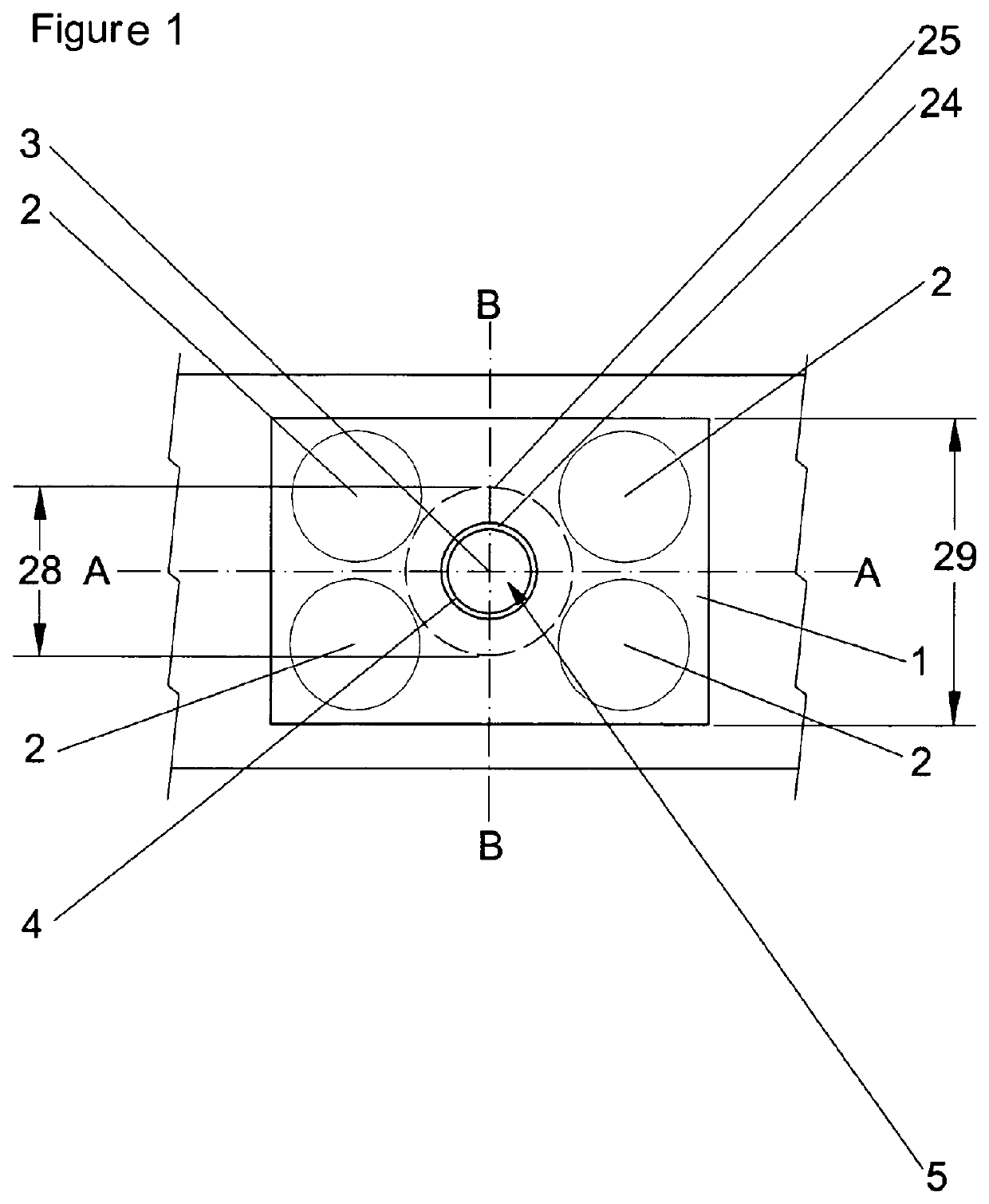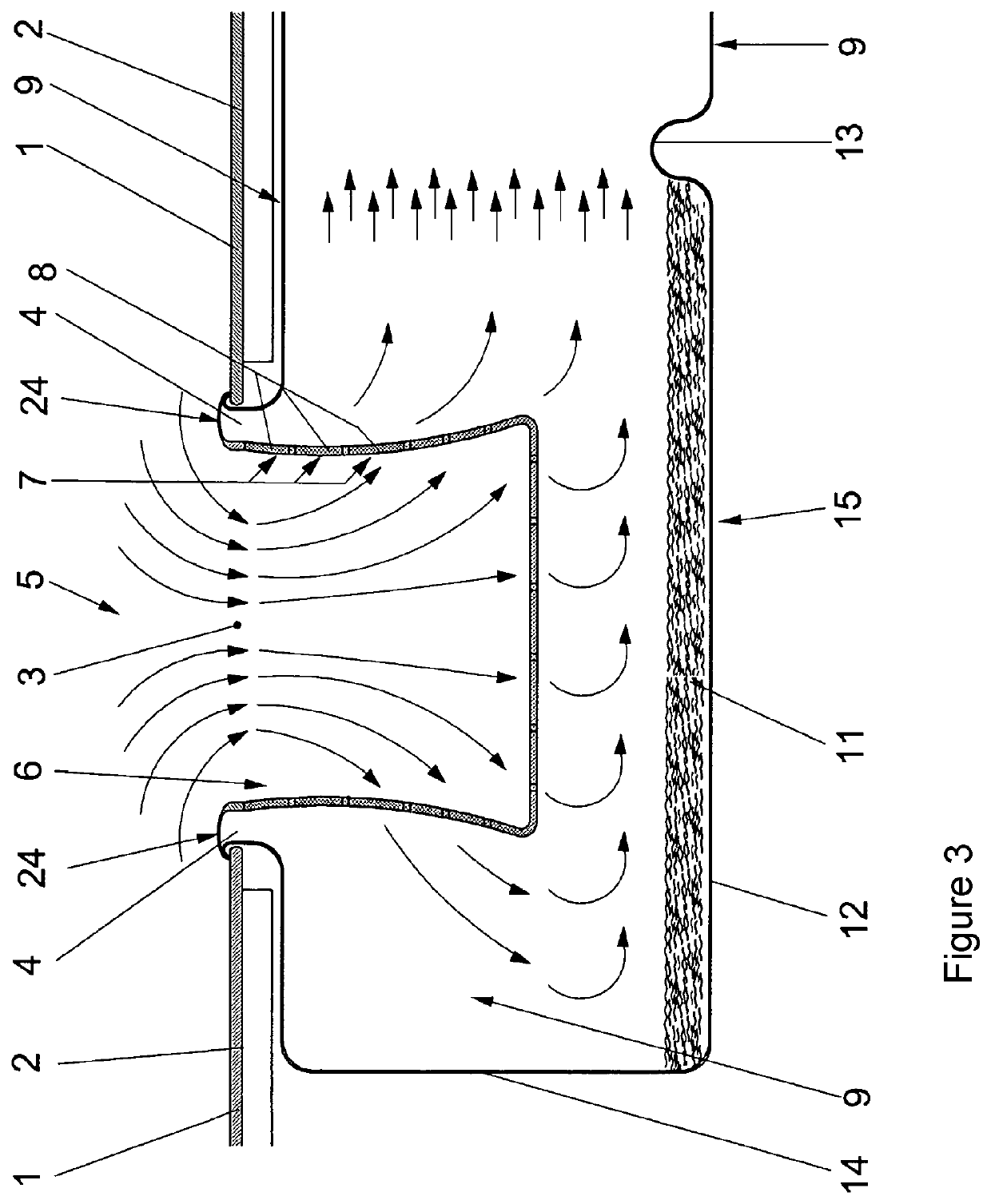Hob with central downward removal of cooking vapors through suction
a technology of suction slits and hobs, which is applied in the field of hobs, can solve the problems of high maintenance costs, disadvantages of known hobs with suction slits on both sides and on the back, and entail marked manufacturing and material costs, so as to prevent cooking vapors from rising and expanding, and low manufacturing, assembly, maintenance and operating costs.
- Summary
- Abstract
- Description
- Claims
- Application Information
AI Technical Summary
Benefits of technology
Problems solved by technology
Method used
Image
Examples
Embodiment Construction
[0033]As a consequence, the present invention relates to a hob (1) with one or more cooking locations (2), which as viewed from above exhibits one or more recesses (4) only in the area (25) around its geometric center (3), but not in its edge areas.
[0034]As a rule, these recesses (4) are connected with one or more devices (5) for removing cooking vapors through suction, wherein these devices (5) for removing cooking vapors through suction downwardly remove the cooking vapors that arose or arise above the cooking location(s) (2) by suction in a direction pointing vertically below the hob (1).
[0035]In general, the diameter (28) of the area (25) for the one or several recesses (4) around the geometric area center (3) of the hob (1) can measure between 10% and 90% of the overall width (29) of the hob (1), preferably between 15% and 85%, in particular between 20% and 80% of the overall width (29) of the hob (1). The shape of the one or more recesses (4) as viewed from above can preferabl...
PUM
 Login to view more
Login to view more Abstract
Description
Claims
Application Information
 Login to view more
Login to view more - R&D Engineer
- R&D Manager
- IP Professional
- Industry Leading Data Capabilities
- Powerful AI technology
- Patent DNA Extraction
Browse by: Latest US Patents, China's latest patents, Technical Efficacy Thesaurus, Application Domain, Technology Topic.
© 2024 PatSnap. All rights reserved.Legal|Privacy policy|Modern Slavery Act Transparency Statement|Sitemap



